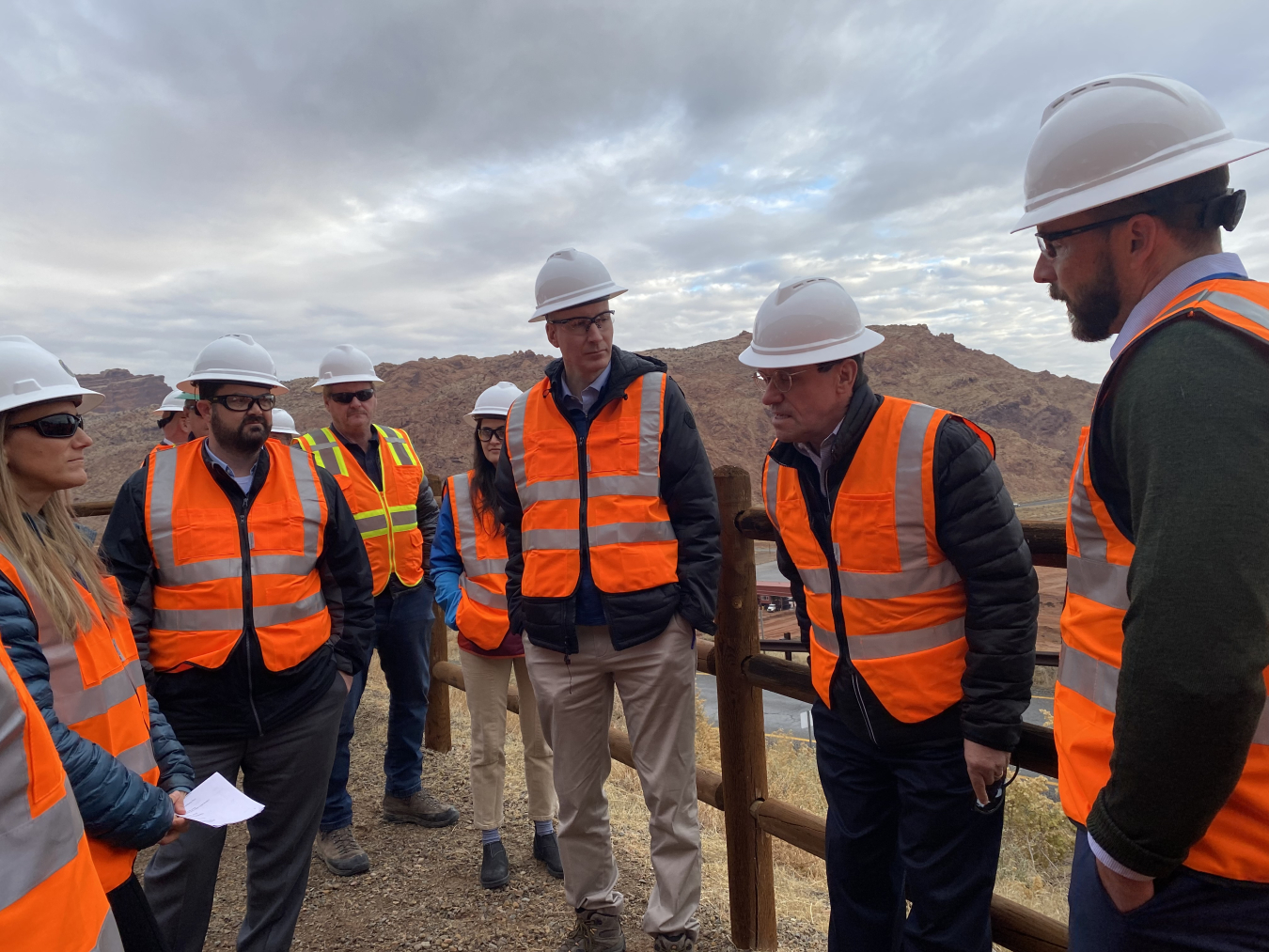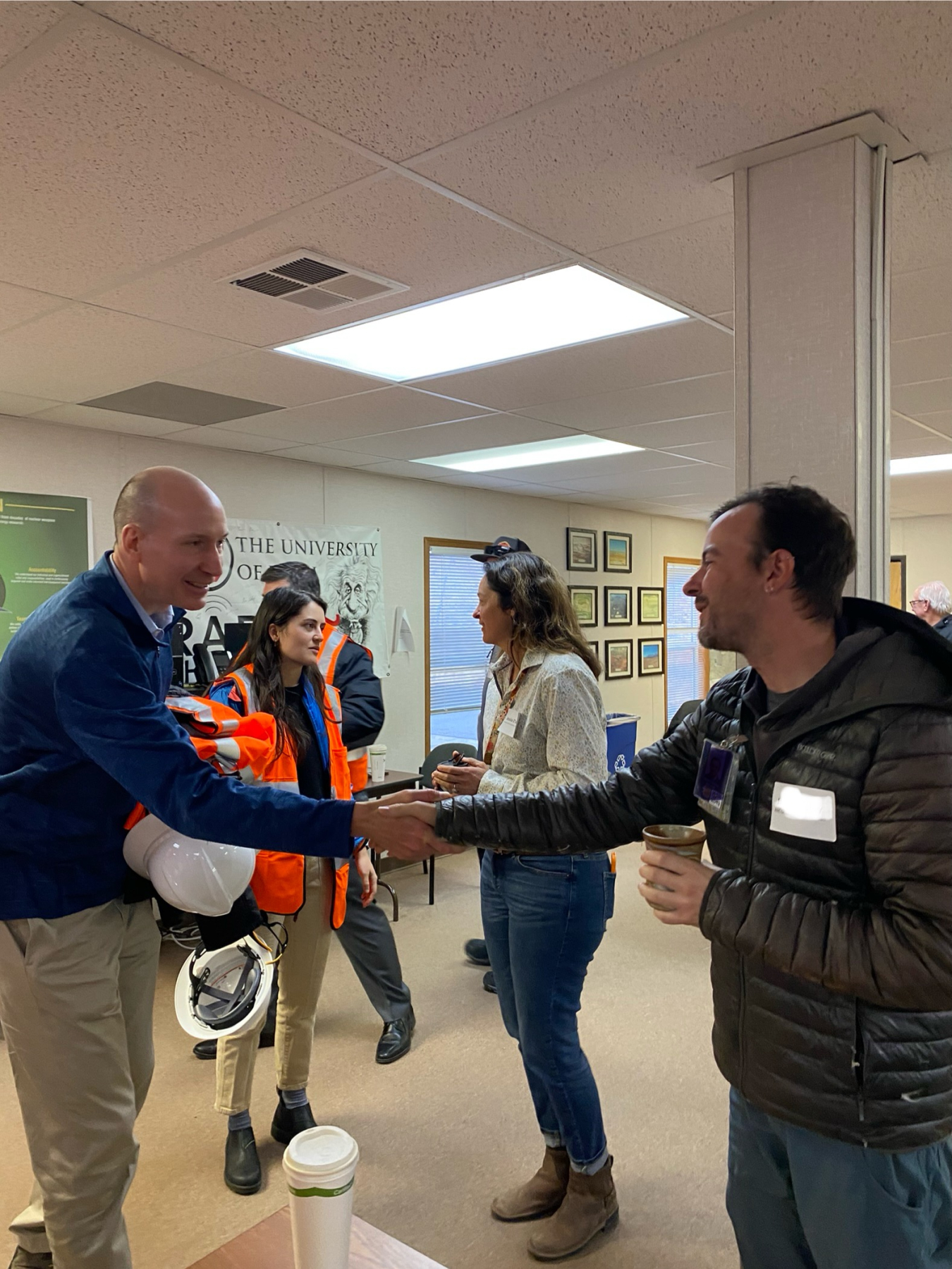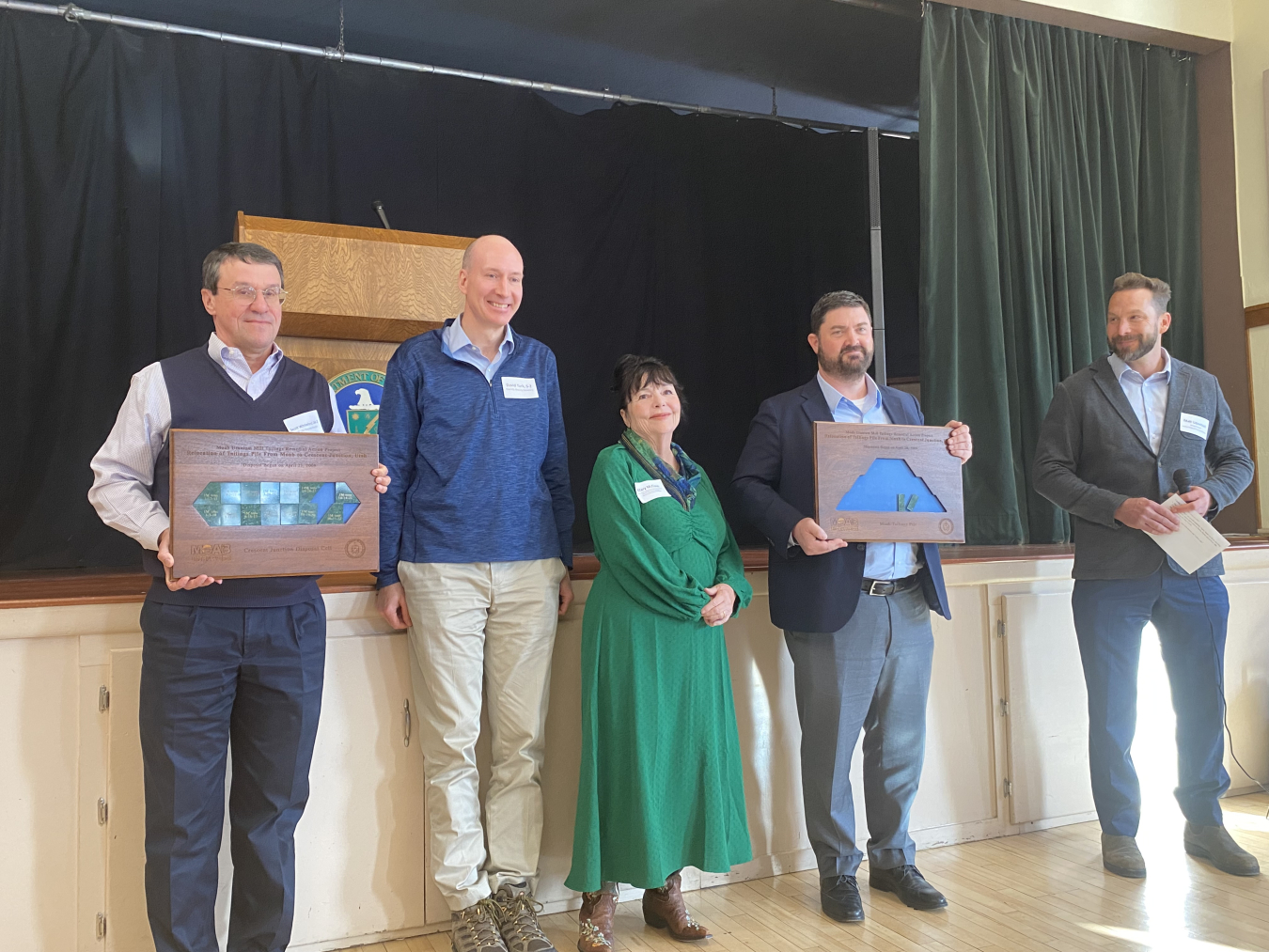U.S. Deputy Energy Secretary David Turk and other DOE leaders joined community members and other stakeholders last week to mark the attainment of an EM 2023 priority at the Moab Uranium Mill Tailings Remedial Action (UMTRA) Project earlier this year.
Office of Environmental Management
December 19, 2023
At center from left, EM Principal Deputy Assistant Secretary Jeff Avery, U.S. Deputy Energy Secretary David Turk and Office of Legacy Management Deputy Director Scott Whiteford tour the Moab Uranium Mill Tailings Remedial Action Project last week with team members from the site.
MOAB, Utah — U.S. Deputy Energy Secretary David Turk and other DOE leaders joined community members and other stakeholders last week to mark the attainment of an EM 2023 priority at the Moab Uranium Mill Tailings Remedial Action (UMTRA) Project earlier this year.
In October, the Moab Project team successfully relocated another 1 million tons of uranium mill tailings away from the Colorado River, bringing the cumulative total to 14 million tons permanently removed.
“The Moab site is a great example of coming together — federal, state and citizen groups — to not only execute a cleanup mission, but to partner and create a vision for what this land can become,” Turk said.

U.S. Deputy Energy Secretary David Turk thanks a Moab Uranium Mill Tailings Remedial Action Project team member.
About 2 million tons of the contaminated soil and debris remain to be disposed of in an engineered disposal cell in Crescent Junction, 30 miles north of the Moab site. The material resulted from legacy uranium milling operations.
“I’m pleased that our team here continues to draw down the mill tailings, protecting the beautiful Colorado River and the Moab community,” Turk added.
Removing the mill tailings from the Moab site is a priority within EM’s 10-year Strategic Vision.
“Every year the Moab UMTRA team works through numerous challenges to advance EM’s cleanup and closure mission at Moab. This year is no different,” Moab Project Acting Federal Cleanup Director Matthew Udovitsch said. “Reaching 14 million tons put us another step closer to executing EM’s mission at Moab.”
EM Principal Deputy Assistant Secretary Jeff Avery thanked the Moab Project’s dedicated team, the Moab community, agency partners and project stakeholders for helping EM reach the milestone ahead of schedule.
“It is exciting to see years of community and project work get so close to completion,” he said.
We are here for the long haul.
Prior to the ceremony, Turk, Avery and other Department leaders were joined by DOE Office of Legacy Management (LM) Deputy Director Scott Whiteford and LM staff for a site tour.
Upon completion of EM’s Moab Project cleanup, LM will partner with the community to determine an end state for the site, and work with the community to plan for reuse and its future.
“We look forward to working with you, the state and tribal partners, and transitioning this great site to making it beneficial for the community,” Whiteford said to an audience of 50 guests. “We are here for the long haul.”

Officials are pictured with the Moab Uranium Mill Tailings Remedial Action Project transfer plaques at a ceremony last week marking the relocation of another 1 million tons of uranium mill tailings away from the Colorado River. From left, Office of Legacy Management Deputy Director Scott Whiteford, U.S. Deputy Energy Secretary David Turk, Grand County Commission member Mary McGann, EM Principal Deputy Assistant Secretary Jeff Avery and Moab Project Acting Federal Cleanup Director Matthew Udovitsch.
Interested community members can inquire about planning for the site’s future at Moab Tailings Project Steering Committee meetings.
Mary McGann, committee chair and Grand County Commission member, joined Turk to move the “tile,” representing another 1 million ton of waste removed from the Moab site and shipped by rail to the Crescent Junction disposal location.
McGann explained how things have come “full circle” since her father worked at the Atlas mining company, which operated the Moab mill decades ago.
“He made the pile [of uranium tailings] and now I’m cleaning up the pile,” she said.
Uranium concentrate, known as “yellowcake,” the milling product, was sold to the U.S. Atomic Energy Commission, a predecessor agency to DOE, through December 1970 for use in national defense programs.
The ceremony concluded with a celebratory yellow cake for guests to enjoy.
-Contributor: Barbara Michel
To receive the latest news and updates about the Office of Environment Management, submit your e-mail address.

